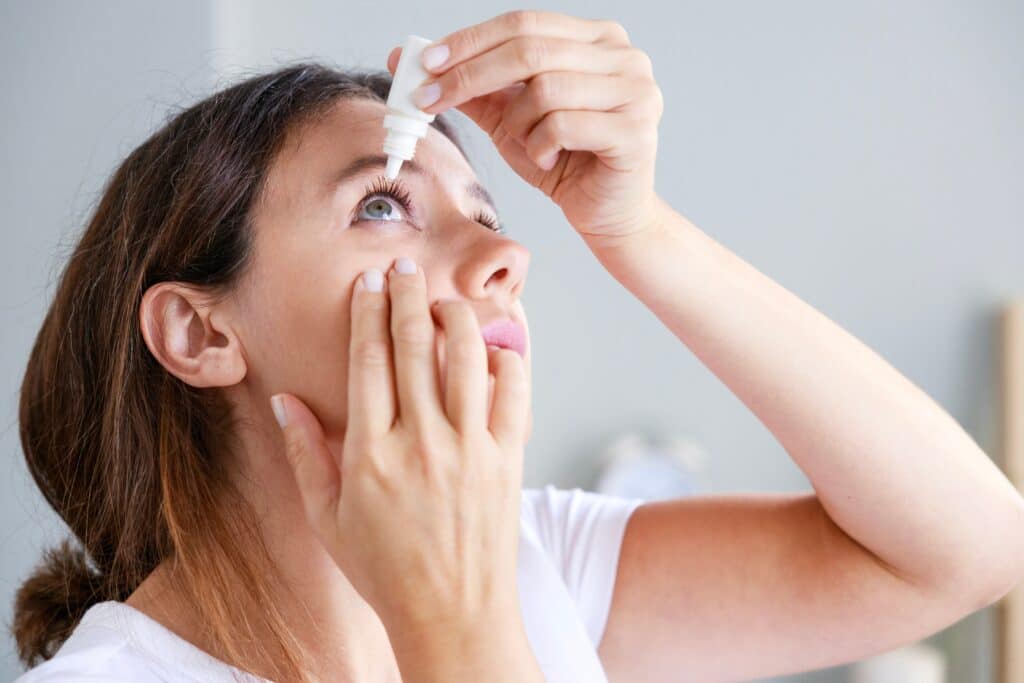Home » Dry Eye Symptoms & Treatment
Dry Eye Symptoms & Treatment
Understanding Dry Eye Disease: Causes, Symptoms, and Treatment Options
Dry eye disease, also known as keratoconjunctivitis sicca, affects millions of people worldwide. It’s more than just occasional eye discomfort; for some, it can significantly impact daily life. Let’s delve into the details of this common condition, addressing frequently asked questions and exploring treatment options.
What Is Dry Eye Disease?
Dry eye disease occurs when your tears fail to provide adequate lubrication for your eyes. Tears play a crucial role in maintaining eye health by keeping the surface moist, providing essential nutrients, serving as a protective barrier, preventing infections, and keeping the eyes comfortable. When the tear film is disrupted, it leads to inflammation and damage to the eye’s surface.
Types of Dry Eye Disease:
- Evaporative Dry Eye:
- The most common type of dry eye occurring in up to 85% of dry eye disease patients.
- Here, you produce tears, but they are unstable and evaporate too quickly.
- Meibomian gland dysfunction (which affects oil production) is a common cause.
- Symptoms can include redness, sandy feelings, and blurry vision.
- Aqueous Deficient Dry Eye:
- In this type, you don’t produce enough tears to keep your eyes lubricated, this is the less common form of dry eye disease.
- Causes include aging, environmental factors, medication side effects, and conditions like Sjögren’s syndrome.
- Symptoms may include stinging, burning, or gritty sensations.
Common Symptoms of Dry Eye:
- Stinging, burning, or scratchy sensations in the eyes
- Stringy mucus in or around the eyes
- Sensitivity to light
- Eye redness
- Feeling like there’s something in your eyes
- Difficulty wearing contact lenses
- Blurry vision or eye fatigue
Dry Eye Treatment Options
- Lifestyle Changes:
- Stay hydrated and maintain a healthy diet rich in omega-3 fatty acids.
- Protect your eyes from windy, dry, or dusty conditions.
- Use a humidifier to add moisture to the air.
- Take breaks from screens to reduce eye strain.
- Artificial Tears and Eye Drops:
- Lubricating eye drops provide relief and help stabilize the tear film.
- Use preservative-free artificial tears to lubricate your eyes.
- Avoid eye drops with preservatives, as they can worsen dryness.
- Consult your doctor for recommendations.
- Warm Compresses and Lid Massage:
- Apply warm compresses to your closed eyelids for about 10 minutes.
- This helps soften the oil in the meibomian glands, making it easier to express.
- After warm compresses, gently massage your eyelids using your fingertips.
- Start from the inner corner of the eye and move outward.
- Use a clean, warm washcloth or a specialized eye mask designed for warm compresses.
- Radiofrequency (RF) Treatment:
- RF energy is applied to the eyelids to improve meibomian gland function.
- This device emits high-frequency electrical currents into the skin around the eyes.
- The energy waves generated by RF heat up the inner layer of the skin.
- This minimally invasive procedure can enhance tear quality, stimulate collagen production and restore meibomian gland function.
- Intense Pulse Light (IPL) Therapy:
- IPL targets inflammation in the eyelids which contribute to dry eye symptoms.
- It closes abnormal blood vessels and reduces inflammation and redness around the eyes.
- IPL can help control abnormal growth of bacteria and eyelid mites on the skin which contribute to blepharitis and meibomian gland dysfunction.
- It improves oil gland function and reduces dry eye symptoms.
- Prescription Medications:
- Cyclosporine (Restasis) and lifitegrast (Xiidra) reduce inflammation.
- Prescription eye drops take 4-6 weeks to see improvement in symptoms and typically require long term use for maintenance of dry eye symptoms.
- Steroid eye drops may be used for short-term relief.
- Punctal Plugs:
- Tiny plugs inserted into tear ducts to slow tear drainage.
- Helps retain moisture on the eye surface.
Fish Oil Controversy:
- Some studies suggest that omega-3 fatty acids (found in fish oil) benefit dry eyes.
- Recent trials have conflicting results, but individual responses vary.
- Consult your doctor before trying fish oil supplements.
Remember, managing dry eye disease involves a personalized approach. Work closely with your eye care professional to find the best strategies for your specific needs. Don’t let dry eyes hinder your quality of life—seek relief and protect your precious vision! 🌟
References:
- Harvard Health: The Latest Thinking on Dry Eye Treatments
- Vision Center: What Is Dry Eye Syndrome?
- American Academy of Ophthalmology: Quick Guide to Dry Eye
- Mayo Clinic: Dry Eyes – Symptoms & Causes



